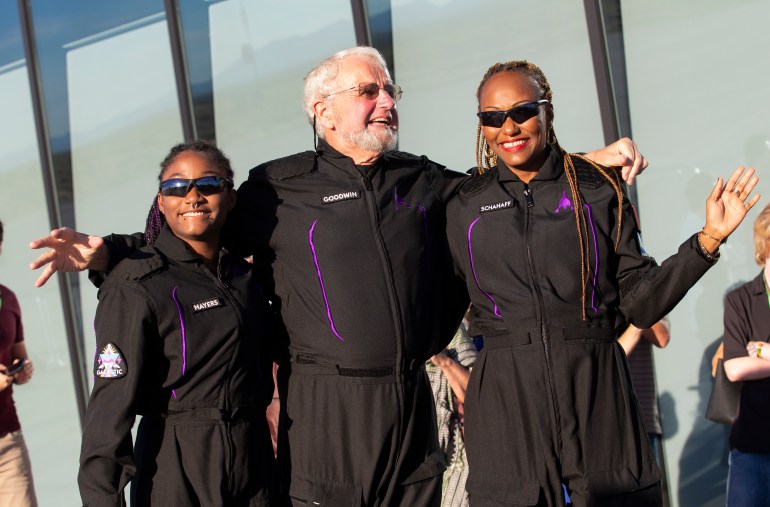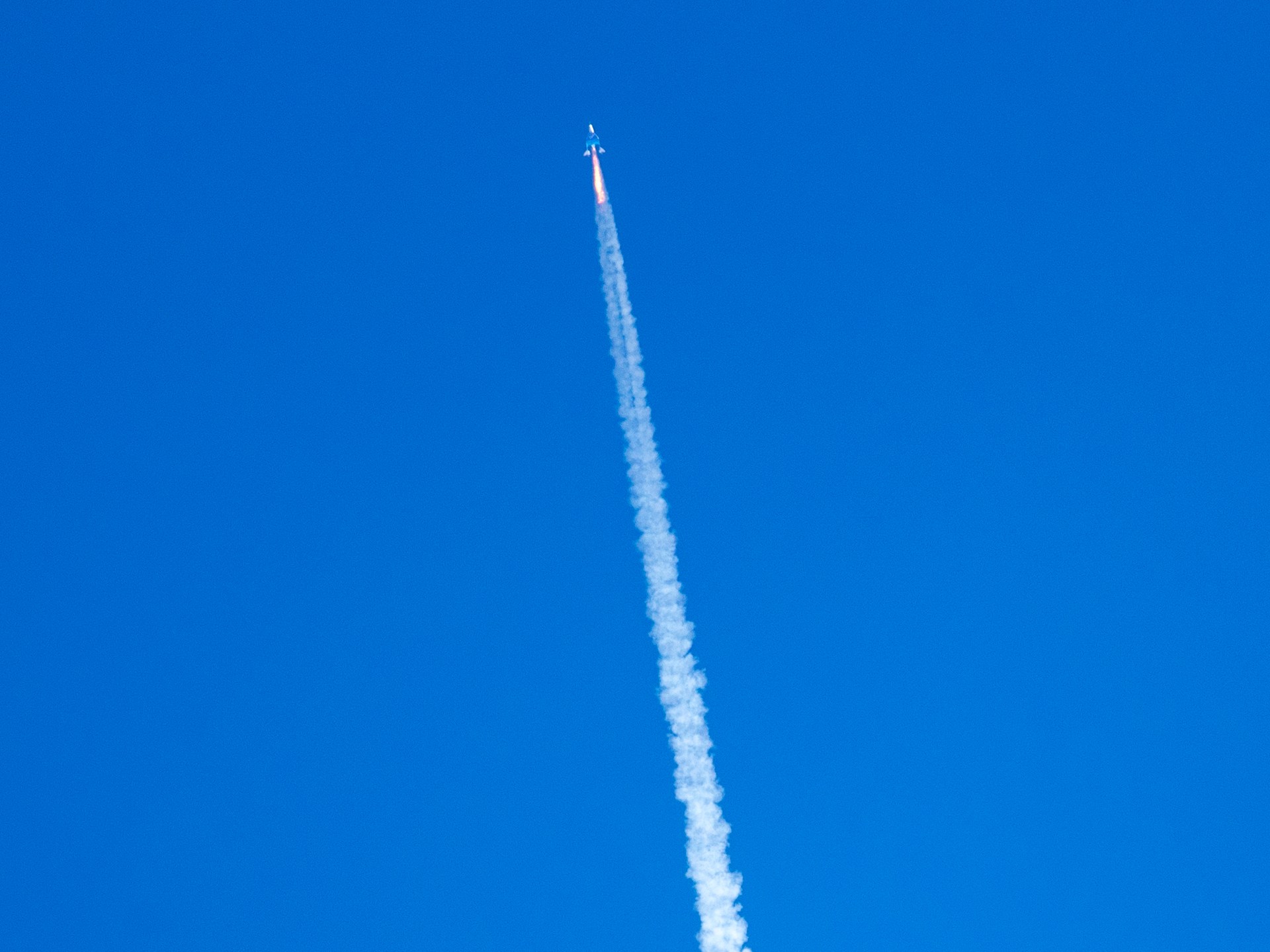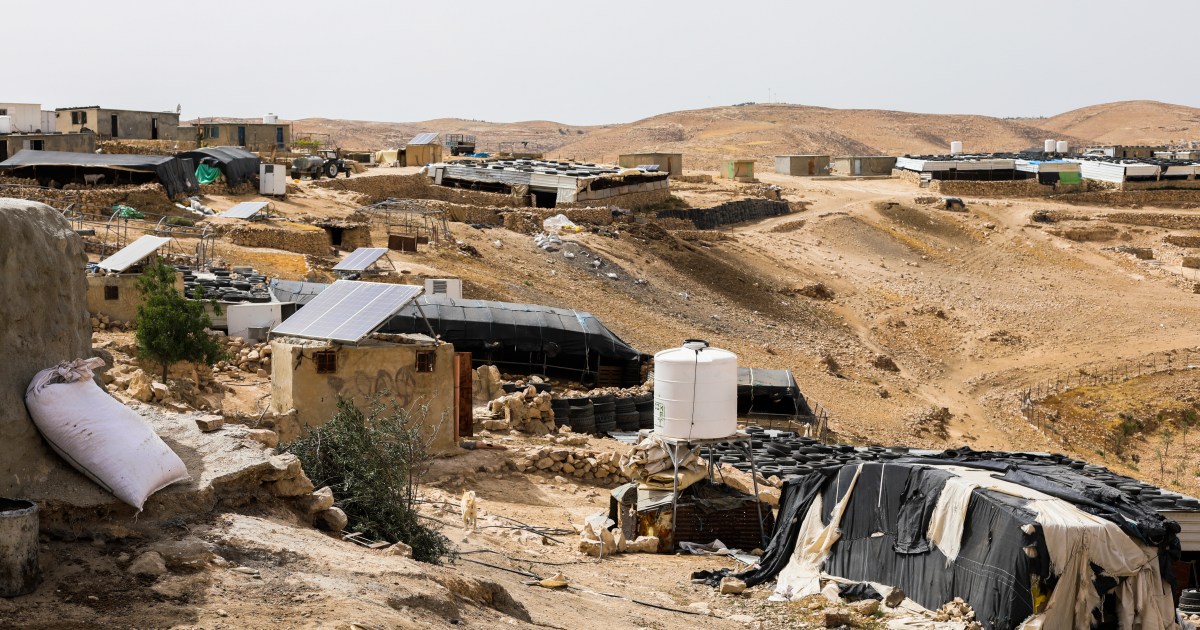Virgin Galactic flies its first tourists to the edge of space
Richard Branson’s company expects to begin offering monthly trips to customers on its winged space plane.
Virgin Galactic has rocketed to the edge of space with its first tourists, including a former British Olympian who bought his ticket 18 years ago and a mother-daughter duo from the Caribbean.
The space plane glided back to a runway landing on Thursday at Spaceport America in the New Mexico desert after a brief flight that gave passengers a few minutes of weightlessness.
Cheers erupted from families and friends watching from below when the craft’s rocket motor fired after it was released from the plane that had carried it aloft. The rocket ship reached about 88km (55 miles) high.
Richard Branson’s company expects to begin offering monthly trips to customers on its winged space plane, joining Jeff Bezos’s Blue Origin and Elon Musk’s SpaceX in the space tourism business.
Virgin Galactic passenger Jon Goodwin, who was among the first to buy a ticket in 2005, said he had faith that he would someday make the trip. The 80-year-old athlete – he competed in canoeing in the 1972 Olympics – has Parkinson’s disease and wants to be an inspiration to others.
“I hope it shows them that these obstacles can be the start rather than the end to new adventures,” he said in a statement.
Ticket prices were $200,000 when Goodwin signed up. The cost is now $450,000.
He was joined by sweepstakes winner Keisha Schahaff, 46, a health coach from Antigua, and her daughter, Anastatia Mayers, 18, a student at Scotland’s University of Aberdeen. Also on board: two pilots and the company’s astronaut trainer.

Space tourists lining up
It was Virgin Galactic’s seventh trip to space since 2018 but the first with a ticket-holder. Branson, the company’s founder, hopped on board for the first full-size crew ride in 2021. Italian military and government researchers soared aloft in June on the first commercial flight. About 800 people are currently on Virgin Galactic’s waiting list, according to the company.
Virgin Galactic’s rocket ship launches from the belly of an aeroplane, not from the ground, and requires two pilots in the cockpit. Once the mothership reaches about 15km (10 miles), the space plane is released and fires its rocket motor to make the final push to just over 80km (50 miles) up. Passengers can unstrap from their seats, float around the cabin for a few minutes and take in the sweeping views of Earth before the space plane glides back home and lands on a runway.
In contrast, the capsules used by SpaceX and Blue Origin are fully automated and parachute back down to Earth.
Like Virgin Galactic, Blue Origin aims for the fringes of space, quick ups-and-downs from West Texas. Blue Origin has launched 31 people so far, but flights have been on hold since a rocket crash in September. The capsule, carrying experiments but no passengers, landed intact.
SpaceX is the only private company flying customers all the way into orbit, charging a much heftier price, too: tens of millions of dollars per seat. It’s already flown three private crews. NASA is its biggest customer, relying on SpaceX to ferry its astronauts to and from the International Space Station since 2020.
People have been taking on adventure travel for decades, the risks underscored by the recent implosion of the Titan submersible, which killed five passengers on their way down to view the Titanic wreckage. Virgin Galactic suffered its own casualty in 2014 when its rocket plane broke apart during a test flight, killing one pilot. Yet space tourists are still lining up, ever since the first one rocketed into orbit in 2001 with the Russians.
Branson, who lives in the British Virgin Islands, watched Thursday’s flight from a party in Antigua. He held a virtual lottery to establish a pecking order for the company’s first 50 customers – called the Founding Astronauts. Virgin Galactic said the group agreed Goodwin would go first, given his age and his Parkinson’s.




